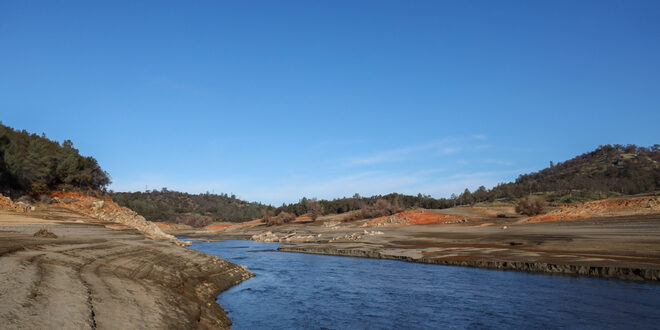The fourth manual snow survey for the year was conducted at the Phillips Station snow course by the Department of Water Resources (DWR) on April 1 and the results were well below average for this time of year; exactly what we all were expecting.
DWR recorded just 49.5 inches of snow depth with a snow water equivalent (SWE) of 21 inches. Only 83 percent of average for this location. Additionally, electronic measurements from DWR’s other stations indicate that statewide the snowpack’s SWE is only 16.5 inches, or 59 percent of average for April 1.
The severity of California’s dry condition is particularly evident at Lake Oroville, the State Water Project’s largest reservoir, where water levels are currently at 53 percent of average. After two years of below average rainfall, the state’s major reservoirs are only at 50 percent of capacity.
The ongoing dry conditions and below average snowpack reinforce DWR’s decision to drop the State Water Project water supply allocation from 10 percent to 5 percent of contracted amounts, matching the record-low allocation recorded six years ago.
“In the long term, this is an alarming trend. And it’s what we have expected from climate change,” said Metropolitan General Manager Jeffrey Kightlinger. “The droughts are going to be drier. The peak storms are going to be stronger. The whole weather system is going to be flashier, much more volatile.”
There might be a bit of a silver lining though as agencies are saying California is better prepared for drought than in the past.
Following the 2012-2016 drought, widespread conservation initiatives encouraged Southern Californians to make conservation a way of life. Residents replaced water-thirsty grass with California native plants and installed water efficient devices and appliances. Per capita potable water consumption dropped from more than 150 gallons a day to an average of about 120 gallons a day last year.
“The good news is, we have enough water to get through this critically dry year. We’ve been preparing for droughts like this. We have sufficient water in storage, Southern Californians have done a great job conserving, and the Colorado River provides a sort of insurance,” Kightlinger said. “But in the long run, we have to do much more to get prepared for the impacts of climate change. All of California’s sources of water are facing serious long-term challenges.”
 California Water News Daily Your Source For Water News in California
California Water News Daily Your Source For Water News in California


